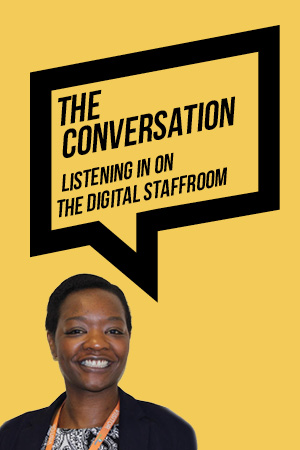Helping Your Child Manage the Move from Primary to Secondary School
@YoungMindsUK
For those of us who’ve been in education a long time, it is easy to forget how many ‘firsts’ our young people and their families experience and what a significant moment each can be.
One of the biggest is the move from primary to secondary school, a time that fills many with both pride and trepidation. It is helpful, therefore, that parents and carers can turn to blogs such as this one by Young Minds, which provides guidance on how to manage the upcoming transition. With simple yet invaluable advice from their experts, including a particular focus on children with special educational needs, parents and carers will feel reassured that they can offer support for their child as they take this next step.
Importantly, the blog shares the experiences of parents and carers themselves – the fears, the excitement, the top tips – leaving those for whom being a secondary school parent/carer is a ‘first’ with the comforting knowledge that many who have gone before them are willing and able to share their wisdom.
On Kindness: Intentionality, #DEIJ, and Difficult Decisions
@savageeducation via @DiverseEd2020
This post by Matthew Savage for Diverse Educators is short, direct and spot on. No longer, he argues, can we rely on school assemblies promoting ‘random acts of kindness’ to build a more empathetic and equitable world. We must instead choose intentional kindness, “unconditionally and without expectation”.
Underpinning Savage’s writing throughout is his experience of people’s lack of kindness when travelling as a wheelchair user. If schools teach children and staff that kindness is random, he ponders, we risk overlooking and excluding those who already face a world of unkindness and discrimination, thereby increasing their marginalisation.
Matthew’s view on kindness as the cornerstone of any school’s diversity, equity, inclusion and justice (DEIJ) strategy is compelling, and one I urge all school leaders to consider ahead of next academic year.
How to Apply for a School Uniform Grant and Get up to £150
@SkintDad
With the cost of living crisis a rising concern for increasing numbers of parents and carers, this blog full of non-judgmental, concrete guidance about how families can mitigate the impact of the school uniform and equipment burden is worthy of attention and circulation.
Here, Naomi Wills, co-founder and editor of financial advice blog Skint Dad, draws on her experience as a parent struggling to make ends meet. And while her tips are aimed at those with children of all ages, they will be of particular interest to those whose children are moving to secondary school – a time when uniform prices can skyrocket.
As Willis notes, the school uniform bill aimed at limiting school uniform costs has been approved; however, many families heading to the shops in the coming weeks will not benefit just yet. So her guidance for grant applications is complemented by other money-saving avenues to explore, making this an indispensable read.
Keeping an Eye on EDI and Anti-racism
@Penny_Ten and @ojukomiller
In another blog on equity, diversity and inclusion, fellow Schools Week contributor Penny Rabiger has teamed up with Professor Paul Miller to share their concern that anti-racism work in schools and other organisations has been ‘re-routed’.
Rabiger and Miller reflect on the global awakening to the importance of anti-racist action after the brutal murder of George Floyd, which brought global attention to existing anti-racism efforts. As the dust has settled, they argue, focus has begun to drift towards a more general approach that dilutes or sidelines this complex, challenging, but fundamentally crucial work.
“There is a value in looking at EDI through an intersectional lens,” states Miller, but warns us about sacrificing depth for breadth.
We know that there are specific issues in schools – from exclusion rates, to KS4 outcomes, to lack of representation – which desperately need that “depth of focus”. With this in mind, though not strictly an education blog post, it is nonetheless a must-read for any school leader or educator committed to tackling these challenges.













Your thoughts